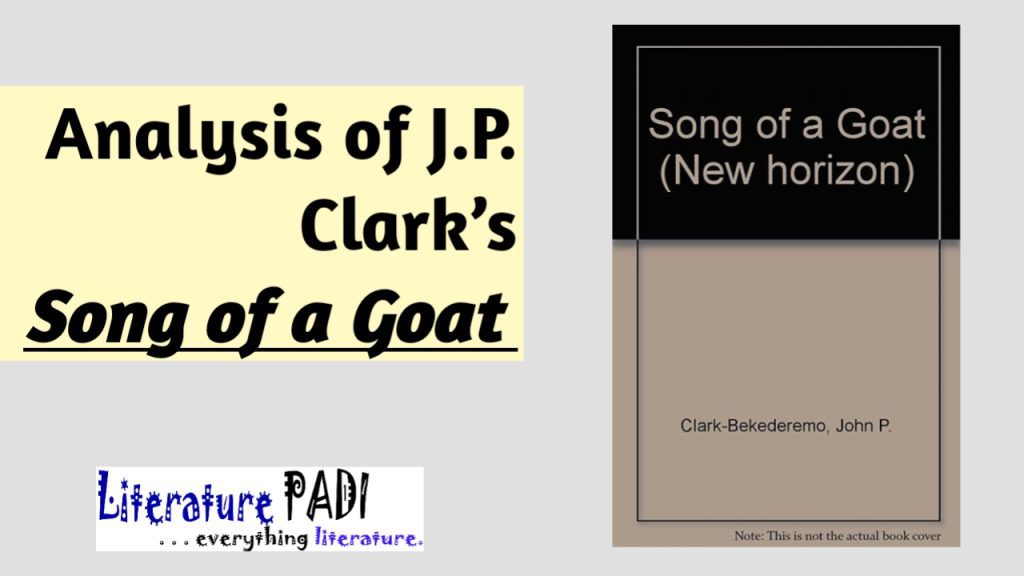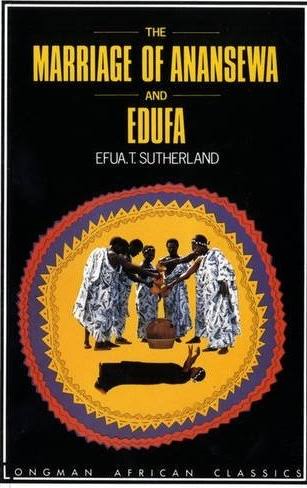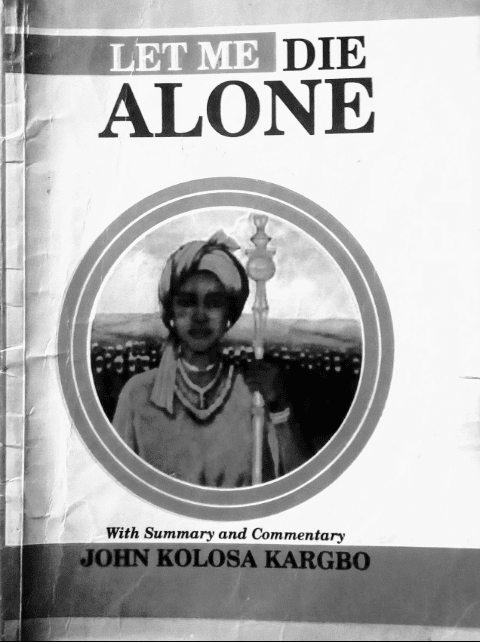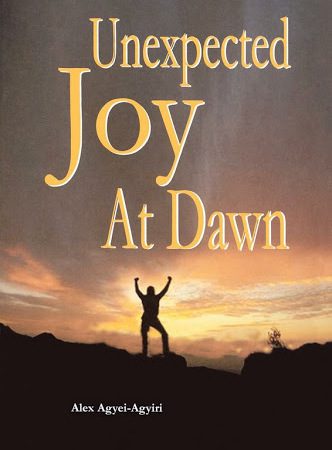Background
John Clark-Bekederemo (1935-2020) was an accomplished Nigerian playwright and poet. He was an integral part of the Ibadan generation of writers that gave the African literature its substance in the 1950s. Others in this category were Wole Soyinka, Chinua Achebe, and Christopher Okigbo. J. P. Clark, as he was fondly called, had written a number of plays and poems. Some of his plays include Song of a Goat (1961), The Raft (1964), The Masquerade (1964), Ozidi (1966) and The Wives’ Revolt (1991).
He also had very fine poetry collections to his name, some of which include A Reed in the Tide (1985), Casualties (1970), State of the Union (1985), and Mandela and Other Poems (1988). J. P. Clark also published a travelogue of his journey through the United States as a Fulbright Scholar in the 1960s he titled America, Their America (1964). And in 1970, he published The Example of Shakespeare, a collection of essays about the challenges of the African writer as regards literary tradition and the use of English Language as the language of creativity.
Song of a Goat is a tragic play imbued with folk elements. It is a very powerful domestic tragedy that throws about the question of infertility and adopts collective rituals of Niger Delta extraction which include the sacrifice of a goat on stage. The play was first published in 1961 as Clark’s debut work. It was produced that same year at the University of Ibadan, Nigeria. The play marked the introduction of Clark-Bekederemo’s work to the public.
The events in the play took place around then year 1960. The setting of the play is Deinogbo, an Ijaw village within the Niger-Delta Province of Nigeria, during the colonial period. This provides a vivid backdrop for the unfolding story.

Plot Summary of “Song of a Goat”
Song of a Goat by John Pepper Clark-Bekederemo is a one-act drama which revolves around Zifa, a respected landowner afflicted with impotence by the gods. The one-act play which has four scenes features a ritualistic goat sacrifice, reminiscent of ancient religious and classical Greek practices.
Song of a Goat is set in a small village in the then Delta Province, Nigeria. The play begins with masseur’s interrogation of Zifa’s wife, Ebiere, regarding her inability to conceive. Ebiere has gone to the Masseur for help. The masseur hints at an unconventional solution for Ebiere, which is for her to take a lover. He warns her that an empty house (womb) is dangerous. This scene indirectly establishes Zifa’s impotence to the audience and forewarns of Ebiere’s infidelity later in the play.
It is at this point that tragic consequences are foretold by Zifa’s half-crazy but prophetic aunt, Orukorere, in a way akin to Cassandra’s unheeded warnings in Greek tragedies. She foretells the tragic consequences of Zifa’s impotence and the family curse he carries.
As the play progresses, we find Ebiere taking Tonye, Zifa’s brother, as her lover and he gets her pregnant. When Zifa discovers what has played out between his wife and his brother, he is furious at the discovery. This prompts the ritualistic goat sacrifice which symbolizes Ebiere’s infidelity with Tonye. Zifa ritually slaughters a goat and instructs Tonye to put the head of the goat into a pot too small for it. The pot breaks and further indicts Tonye of adultery with his brother’s wife
In the event of this discovery, Zifa contemplates avenging the betrayal of familial trust from his brother. He intends to kill Tonye but before he could do that, he finds Tonye dead by suicide. Ebiere also collapses.
Consumed by shame, Zifa heads toward the sea with the intent to end his life, while news arrives that Ebiere has miscarried. In an alternate ending, the masseur returns, acting as a choral leader in classical tragedy, offering final words as an epitaph of calamity.

Relevance of Clark-Bekederemo’s “Song of a Goat”
In this section, we shall look into a number of things which include the place of Song of Goat in J. P. Clark’s oeuvre, certain elements of the play, and its reception. As a debut play, the play clearly sets John Pepper Clark-Bekederemo as a distinctive dramatist and poet. However, the reception of the play has been divergent among critics and audiences.
The play’s use of rhetorical control, symbolism, and language has garnered praise from many critics, further foregrounding its artistic merit. However, as a theatrical production, Song of a Goat has faced a mixed history. Certain elements like the on-stage goat sacrifice has received unfavourable reactions. Besides, the play’s riddles and African allusions are often lost on non-African audiences, an unintended impediment in their full appreciation of the cultural nuances of the play. But of course, the onus is on the non-African audiences to research these nuances to be able to appreciate the play fully. It is also pertinent to note that success of the play on stage has always been heavily reliant on the actor portraying the masseur. This central character holds a pivotal role with the play.
In 1964, Clark-Bekederemo published a sequel to Song of a Goat which he titled The Masquerade. He continues the story of the family akin to the ongoing sagas in Greek tragedy. In this sequel, deviations from the original play are evident. Ebiere’s death in childbirth and the survival of her son, Tufa, mark a shift in the continued narrative. Tufa, facing a tragic fate, meets his end due to a violent act stemming from the fear of his family curse affecting another family.
Read: Characters in John Pepper Clark’s “Song of a Goat”
Dramatic Techniques
Song of a Goat manipulates classical dramatic devices to portray the curse on Zifa’s family, with the cause of the curse left enigmatic due to the play’s scope. Orukorere, in her half-possessed state, reinforces this familial curse. The sacrificial ritual in which a goat is killed in parody of the illicit relationship between Ebiere and Tonye takes a defiled turn in this drama.
The chief linguistic device in Song of a Goat is the use of metaphor and riddle. The masseur articulates infertility metaphorically with his reference to an “empty house.” He also employs riddles such as the neglect of fertile ground with “elephant grass” to allude to Zifa’s impotence.
The four movements of the drama progress through impotence, prophecy, the goat’s sacrifice, Tonye’s suicide, and Zifa’s final act of atonement. All through these movements, the villagers play the role of a chorus, a role that allows them to pass commentary on the unfolding events. The masseur acts as the community’s sage. His significance is further emphasized in the alternate closing of the play. The alternate end to the play underlines the villagers’ resilience and newfound self-reliance in the face of tragedy.
Foreshadowing is also judiciously used in Song of a Goat. This much is depicted in Orukorere’s prophecy. While her message of doom is not taken seriously, every word of her prophecy came to pass later in the play. Besides, the masseur’s advice to Ebiere hints at the eventuality of her having an affair with her husband’s brother.
 WHATSAPP: Click HERE to join the new Literature PADI WhatsApp group to receive latest updates on your phone and for further literary discussions!
WHATSAPP: Click HERE to join the new Literature PADI WhatsApp group to receive latest updates on your phone and for further literary discussions!










